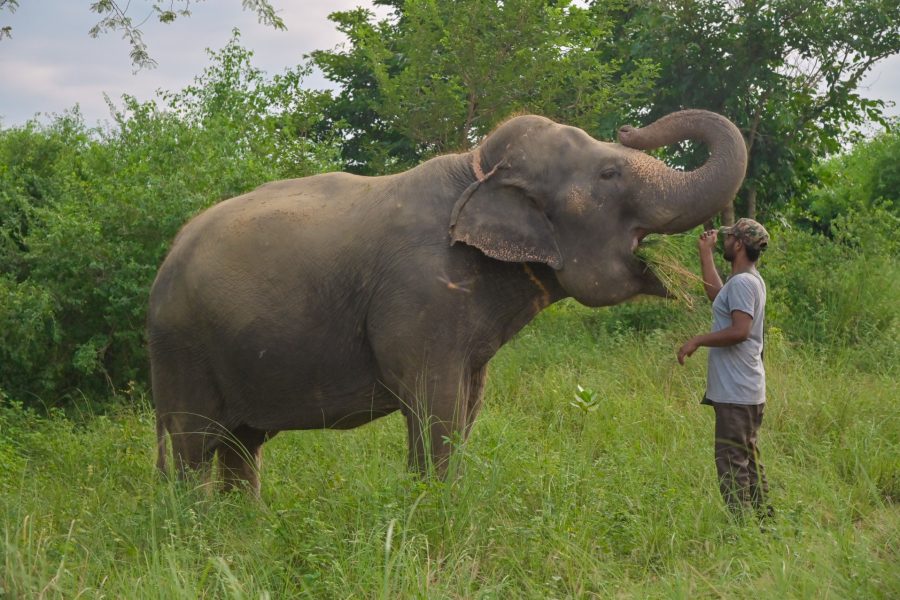1.) How will putting on collars help reduce the conflict and keep the elephants safe?
Putting satellite collars on the elephants allows our team of trackers to more effectively track the elephants’ movements and map out their behaviour. This allows us to predict potential conflict before it occurs, and provide an early warning to the Rapid Action Forces and villagers that a herd/bull elephant is approaching. This gives these first responders time to swing into action and prepare for the elephants’ arrival and block their entry into fields as well as giving people sufficient time to evacuate the premises to avoid conflict and human casualties.
2.) How will you get the collars on, won’t the herd protect the elephants that have been tranquilized?
Collaring the elephants will be done once the elephant has been tranquilized by our trained veterinarians. In the case of lone bull elephants, this involves tranquilizing that one bull. In the case of the matriarch, we will have to tranquilize the matriarch and allow the vets to quickly collar the matriarch. The animals will not be completely sedated, only made drowsy and controllable – and all tranquilizing will be done by a senior veterinarian in the presence of the Forest Department and the Wildlife SOS team.
3.) Won’t putting the collars on make the elephants more at risk if everybody knows where they are?
The GPS signal provided by the collars is only accessible by the Wildlife SOS team and the Forest Department, not by local people. The local people will only be informed of the elephants’ locations in case of a potential conflict incident.
4.) Why don’t we use bees to deter the elephants?
Bee fencing, chilli fencing and electrical fences have not proven effective in any part of India. In specific, the bee fences were tried in parts of southern India and failed. This is most likely to do with the species of bees in question. Note that introducing African bees into an ecosystem in which they are not native can be extremely harmful to the environment. In addition, bee boxes attract sloth bears which are found in the Mahasamund area and will result in an escalation of sloth bear conflict in the area.
5.) Is relocation an option?
Relocation is an option in the event that the early-warning system does not work. However, relocation involves several logistical complications (including government permissions, potential conflict in the site of relocation, stress to the animals, identifying a suitable safe tract of land for their relocation.) and can go terribly wrong and be counterproductive if not done properly. It is, however, an option we are exploring, but will only move forward if we feel that there is a safe chance of its success.
6.) Where did these elephants come from?
Reports dating back to the arrival of the elephants as well as eye-witness reports from the surveys conducted by Wildlife SOS suggest that the elephants came either from the state of Orissa or Jharkhand. However neither has been confirmed.
7.) What will happen to the elephants if this project doesn’t work?
If we are able to radio collar the elephants, the early warning system will definitely work in reducing conflict in the area.
8.) Is there a long term plan for these elephants?
The long term plan can only be decided based on the level of success of the conflict mitigation. The plan will evolve with the needs of the situation and in the best interests of the people and the elephants. We hope that the success of the radio collaring project allows for it to serve as a model for other conflict mitigation projects in India and Asia.




